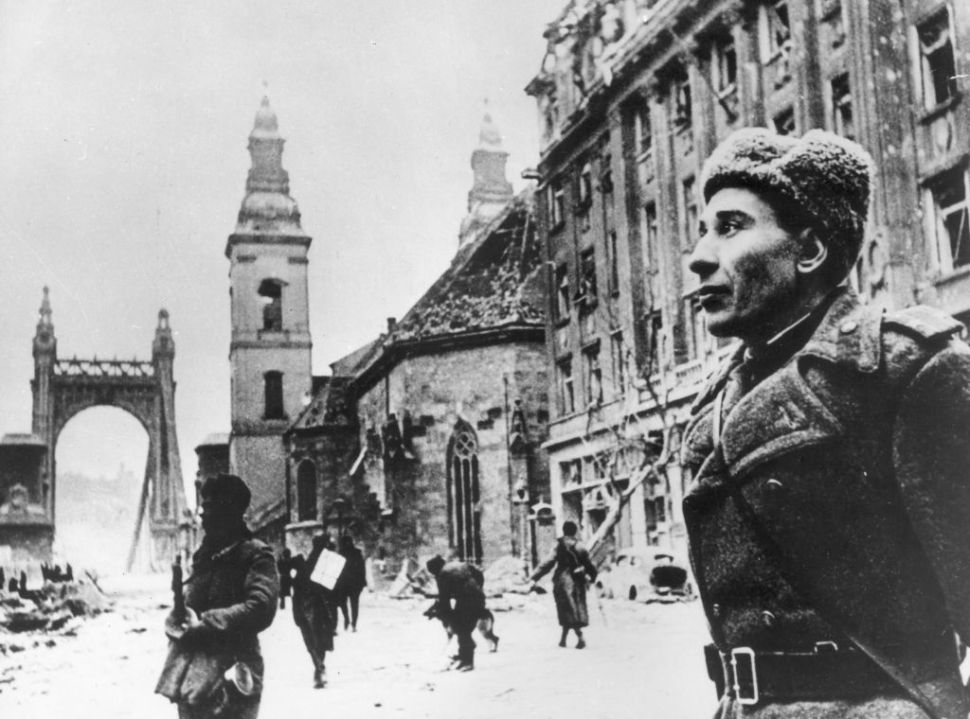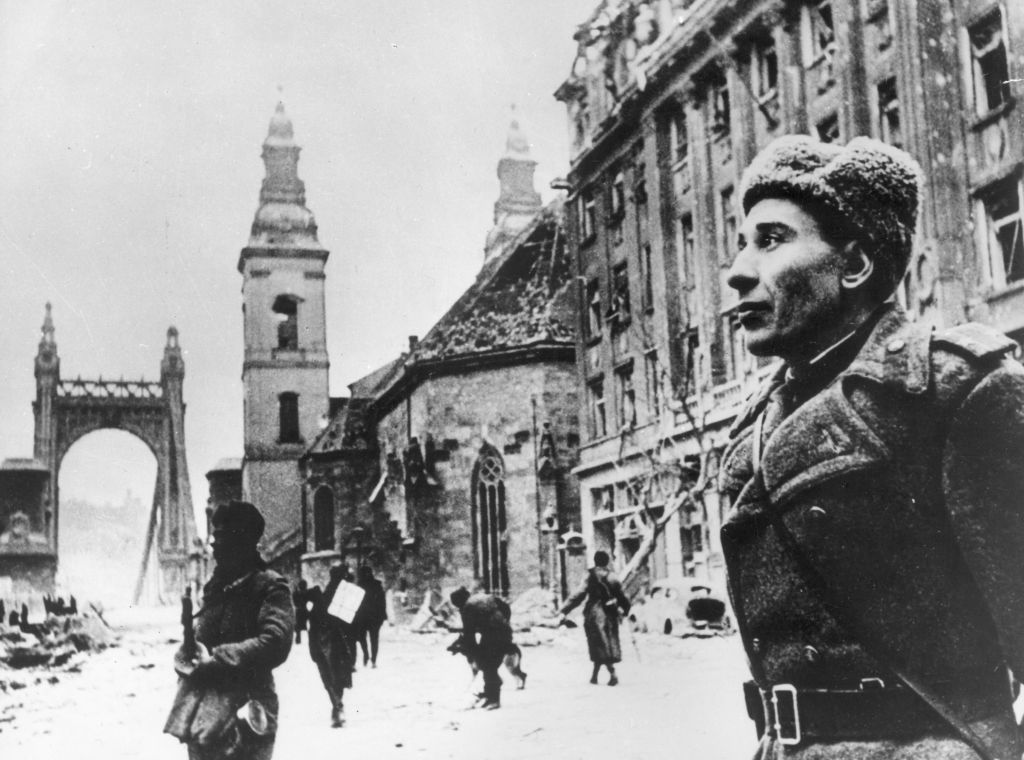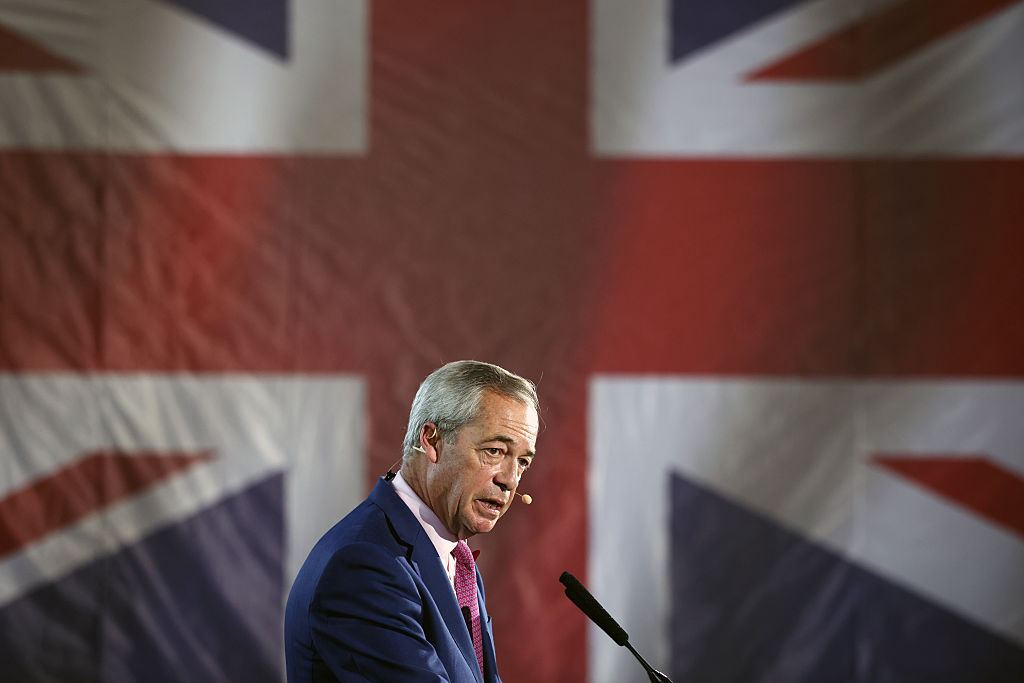Artillery boomed over the Buda hills, the flashes of explosions slicing through the freezing winter dusk. The crack of rifle fire sounded nearby and the air was thick with the acrid stink of cordite. It was 24 December 1944 and Giorgio Perlasca was trying to get to the Spanish Legation villa to celebrate Christmas. The Hungarian soldiers at the checkpoint said it was not possible to proceed. The Russians were advancing and were now just a few hundred yards away. Perlasca explained that he was a Spanish diplomat and asked again to pass through. The soldiers reluctantly agreed. A few minutes later Perlasca was inside the Legation building. Sixty people had taken refuge there but had somehow managed to find a Christmas tree and some presents for him.
Perlasca wrote a long memorandum about his rescue work, but otherwise did not speak of his achievements
Perlasca stayed for a while, then returned downtown. He left his presents, fearing that it would send the wrong message if he took them. The next day brought tragic news. The villa had been hit in the fighting and burned to the ground. These were days of death, starvation and savagery. By late December 1944, Budapest, once a cosmopolitan oasis in the midst of war, was a frozen hell-scape, wreathed in gunsmoke. The city’s architectural glories were reduced to charred, smoking rubble, the Danube choked with bloated, frozen corpses. The city was surrounded by the Russians, who were advancing street by street, building by building, room by room, in savage fighting. The Hungarian and German defenders, outnumbered and outgunned, knew defeat was inevitable. Much of the population was starving, hiding in freezing cellars, venturing out to hack a piece of meat from the corpses of ice-covered horses that littered the streets. The city’s surviving Jews were crammed into two ghettos, dying of hunger and disease, while Hungarian Arrow Cross death squads roamed the streets, shooting them into the river.
The battle for Budapest and the last convulsions of the Hungarian Holocaust brought forth few heroes. Some such, as the Swedish envoy Raoul Wallenberg, who saved thousands of Jews, are reasonably well-known. Others, such as Giorgio Perlasca, languished in obscurity for decades. At first glance Perlasca seemed an unlikely saviour of Budapest’s Jews. Born in Italy in 1910, during the 1930s he was an ardent fascist. He fought with Franco’s forces during the Spanish Civil War. In a curious twist of history, that time on the frontlines would later give him the means to save thousands of lives. In the early 1940s Perlasca was working for the Italian government, procuring food supplies across the Balkans. It was in Nazi-occupied Belgrade that he first became aware of the human cost of the Germans’ racial laws. He saw that the city’s Jews and Roma had vanished. Their absence, and their likely fate, disturbed him. Life was very different then in wartime Budapest. Hungary’s Jews were restricted by a series of anti-Jewish laws, and Jewish men recruited for often brutal army labour service, but the community was largely protected. Admiral Horthy, the country’s ruler, refused Hitler’s demands to hand over Hungary’s Jews. Perlasca had many Jewish business partners and acquaintances in Budapest.
All that changed after the Nazis invaded in March 1944. By early July, Hungarian gendarmes and the SS had rounded up and deported 430,000 Jews from across the country to Auschwitz. Only the Jews of Budapest remained. In October, Admiral Horthy was toppled in a coup led by the Arrow Cross, the Hungarian Nazis, and their allies in the SS. A new reign of terror began. As soon as Perlasca was released he went straight to the Spanish Legation. The diplomats had good news: his earlier application for citizenship had been approved. He was now Spanish. The Hungarian authorities immediately informed Perlasca that he had to leave within 15 days. He would stay for many months, becoming one of Budapest Jewry’s most courageous and steadfast allies.
By this time Spanish diplomats, like those of other neutral powers such as Sweden and Switzerland, were issuing protective papers for Budapest’s Jews and placing their apartment buildings, hospitals and children’s homes under diplomatic protection. It was all a giant bluff, a deadly game of poker played for thousands of lives: there was no real legal basis for such manoeuvres. But the murderous Arrow Cross government, desperate for international recognition, sporadically recognised the protection papers. By late November around 3,000 people were under Spanish protection in the area known as the International Ghetto, in the riverside 13th district.
Perlasca’s rescue operation was becoming increasingly complicated. The protected Jews had to be fed – when there were barely any food supplies. Hungry, frightened and traumatised, they lived in cramped, overcrowded conditions. At the end of November Angel Sanz Briz, the Spanish minister, left Budapest. Perlasca too could have departed. Instead he change his first name from Giorgio to Jorge and appointed himself Spanish chargé d’affaires. Perlasca, like other neutral rescuers, including Wallenberg, the Swiss Carl Lutz and Angelo Rotta, the Papal Nuncio, showed extraordinary courage. Perlasca repeatedly physically intervened with the SS and the Arrow Cross to save Spanish-protected Jews, saving as many as he could. When hundreds of Jews were gathered for deportation at Józsefváros station, Perlasca rescued many. He saved two children by telling them to run towards his car, which was a Spanish diplomatic vehicle. Once the children were inside he faced down two angry SS officers – one of whom was Adolf Eichmann. In early January, when the Arrow Cross threatened to slaughter the city’s surviving Jews, Perlasca threatened in turn to arrest all Hungarians living in Spain, seize their goods and to ask the Brazilian and Paraguayan governments to do the same, if the massacre was not called off. He had neither the authority nor the means to carry this out. His bluff was one of several manoeuvres to save the city’s Jews in the final days of the siege. The ghettos were soon liberated by the Russians and about 100,000 Jews survived.
Perlasca, a quiet and self-effacing man, returned to Italy in summer 1945. He wrote a long memorandum about his rescue work, but otherwise did not speak of his achievements. Even his family was unaware of his heroism. Eventually in 1987, as Communism eased, a group of Hungarian Jews tracked him down. Perlasca was honoured by Hungary, Italy and Yad Vashem in Jerusalem, which appointed him a Righteous Among the Nations. He died in 1992, finally lauded for his heroism, his courage testimony to the power of one man who decided to stand up against evil.








Comments